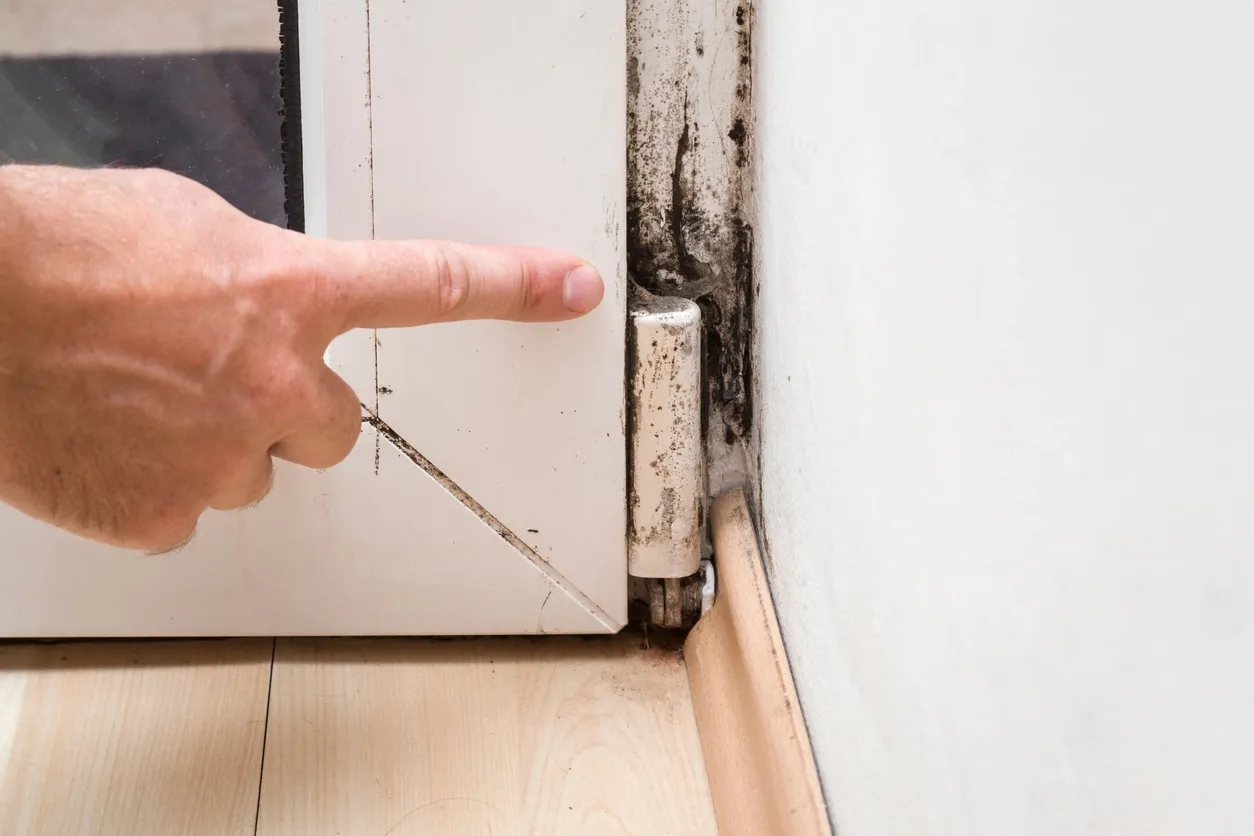Types of damp:
There are three types of damp. These are rising damp, penetrating damp and condensation. It is essential to understand which type of damp is affecting your property as this can affect the treatment of it as well as the cost of the treatment.
- Condensation is the most common type of damp encountered. The cause of condensation is moist warm air condensing on walls that are cold. It is mainly seen during winter as the walls tend to be colder during this time. However, the issue can be made worse by a central heating system that becomes very hot and then cools down again as this creates warm damp air which causes condensation. It can also be exacerbated by a lack of ventilation, particularly in older homes. This is because these houses were designed to be breathable and as such allow damp air into the house. Condensation is apparent where there are droplets of water on windows or walls, the appearance of dark mould and an unpleasant mouldy smell. When these symptoms are apparent, wipe it away with a cloth. If the cause is a lack of ventilation, then a ventilation system can be the cure for the issue.
- Rising damp is caused by water from the ground rising up the walls or floor. It is natural for walls and floors to allow the entry of little amounts of water, however rising damp is usually stopped because of a damp-proof course or membrane. Regulation provides that newer houses must have both (Part C for England and Wales). However, buildings built before 1875 may not or they may have been damaged over time. Rising damp can also be caused by a lack of drainage. Rising damp causes damage to skirting boards and plaster, disrepair in wallpaper or paint, a white powder on the wall and tide marks rising up the wall.
- Penetrating damp arises because water leaks through the walls. This can expand across all walls and ceilings. Unlike rising damp this will move horizontally rather than travelling upwards. This is caused by structural issues such as faulty guttering or roofing or cracks which allow water into the walls or roofs during rainfall. It can also be caused by interior leaks. This type of damp will create damp patches on the walls and ceilings and may darken when there is rainfall.
Gas and Water leaks:
Gas and water leaks can be extremely catastrophic if not dealt with quickly. They can also be the cause of the disrepair mentioned above. The Landlord and Tenant Act 1985, the Housing Act 2004, and the Homes (Fitness for Human Habitation) Act 2018 all state that landlords have a duty to ensure that gas appliances, electrical appliances and plumbing works are safe and functional. If they have not done this above-mentioned requirements, then you may have a claim for compensation as well.
Our service:
If you live in a rented property where there are cracks, damp, mould or leaks which have caused you to suffer or has exacerbated any health issues or have caused damage on the property, then you could be entitled to compensation. Our specialist solicitors will guide you through what is needed to file a claim and advise you on what would be included when it comes to out of pocket expenses. This could include:
- General damages
- Travel Expenses
- Medical expenses that are not covered by the NHS
- Loss of earnings
- Loss of anticipated earnings
- Care claim
- Discuss housing disrepair

